What Tools Do I Need for Electrical Wiring
Like any project, electrical wiring can't be done without the right tools. As basic tools have been improved over the years and new specialized tools are developed, the list of tool choices for electricians DIYers becomes even longer.
Even so, there's a short list of “must have” tools that every person performing electrical work should have. What are those tools? And has the list changed significantly in recent years?
A recent study asked Graybar, a North American provider of electrical tools, to identify the tools electrical contractors buy more than any other for electrical work.
“There's no question that today's electrical contractor must be more versatile than ever, and to tackle a variety of jobs with efficiency and ease, electricians need an arsenal of hand and power tools,” said Dennis Rees, Graybar tool product specialist.
However, to avoid being loaded down with too many tools, choices must be made wisely.
Rees explained: “It is easier to narrow down tool options by recognizing that the most essential hand and power tools fall into distinct categories. That's how we've organized our list of 'Tools Most Commonly Used by Today's Electricians.' Whether buying tools for the first time or replacing well-worn favorites, these tool selections can help electricians work smarter.”
Top Electrical Tools List:
• Pliers
• Screwdrivers and nut drivers
• Wire strippers
• Utility Knife
• Fishing tools
• Measuring devices
• Labeling machines
• Power drills and drivers, hammer/drills
• Power saws
• Voltage Detectors/ Multimeter
HAND TOOLS
Every electrician needs basic hand tools to perform everyday tasks. Fortunately, today's basics are better than older models, providing more comfort and safety than their predecessors. Manufacturers have made tools more 'ergonomically correct,' and improved designs help cut down on hand and wrist injuries often caused by repetitive movement. Plus, they make it easier to perform the same motion over and over because the tools just feel more comfortable. While today's designs may provide more safety and comfort, they're still the basic hand tools electricians have been using for years.
Pliers
Two of the most common tools an electrician can't work without are side-cutting pliers and long-nose or needle-nose pliers.


Klein is the most recognized hand tool name in the electrical industry. Top sellers include classic models such as the high-leverage side-cutting pliers for heavy-duty cutting and connector crimping, and six-inch long-nose pliers. Klein's ergonomic Journeyman series pliers are also quite popular. These tools have contoured and cushioned handles that feature a pliable outer surface and hard, black inner material providing a more comfortable grip without sacrificing tool strength and durability. They also have a contoured thumb area and a flared thumb rest that further improves their feel and gripping power.
Screwdrivers and nut drivers
Electricians need several screwdrivers and nut drivers to work with various types of fasteners and applications. For electricians who want one tool that adapts to many uses, Klein's 10-in-1 screwdriver/nut driver set with numbers 1 and 2 Phillips; 1/4-inch, 3/16-inch slotted, 5/16-inch and 1/4-inch nut drivers; numbers 10 and 15 TORX; and numbers 1 and 2 square-recess bits. Everything fits into the same chrome-plated, heat-treated shaft with a comfortable cushion-grip handle. Replacement bits are available.
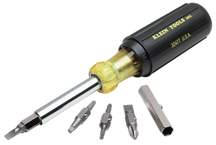
Wire strippers
In this category, Ideal Industries' T-Stripper line of wire strippers is a top seller.
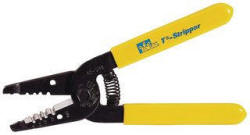
They have been an industry standard for almost 50 years. Best sellers are the Reflex wire stripper and the T-Stripper. The Kinetic Reflex T-Stripper is a strong new addition to the line.
Ergonomic designs are one reason for their popularity. Curved handles are designed to fit an electrician's natural grip and reduce repetitive motion fatigue. Non-slip Santoprene textured grips provide more control. A thumb guide promotes comfort while focusing kinetic energy for faster wire stripping.
Razor Blade Knife (Utility Knife)
Although some people use utility knifes for things they shouldn't, like stripping their Romex wiring, these tools do come in handy. You will find you use this tool quite a bit during your wiring project, even if it's just to open boxes.

Fish tapes and poles
Fish tapes: The Ideal Tuff-Grip line of fish tapes is a strong seller at Graybar.
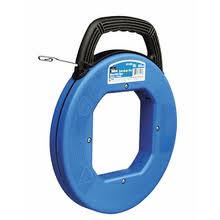
Handles on impact-resistant cases are large and comfortable, so a secure grip can be maintained, even when wearing work gloves. Tape materials are suited to any type of job.
Fish tapes are used more for conduit/commercial applications. Not all residential wiring project will require a fish tape.
Fish poles: Fish pole wire-installation tools facilitate wire pulling in drop ceilings, down walls or under raised floors. There are several Greenlee models, including the 12- and 24-foot Fish Stix kits and the new 15-foot Glo Stix that glows for better visibility in dark environments. The lightweight design makes them easier to use than heavier models.
Again, a fish pole is not required for all wiring projects. For a DIYer, keep in mind this tool is available if you get into a situation where it is needed.
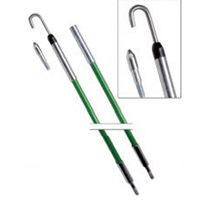
Measuring devices
Laser measuring tools are becoming more popular, but no electrician's tool belt is without a basic tape for simple measurements. Those with rare earth magnetic tips that stick to iron and steel surfaces permit fast, one-person measurements. Most folks already have a tape measure but if not you can pick one up at any hardware store or online.
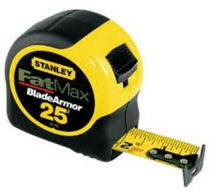
Labeling machines
Properly labeling work at installation saves time when making the final connections. Labeling wires including electrical, Ethernet, and coax as you install the wire makes the final panel connections much quicker. A labeling machine can be used to label these wires. It can also be used to create labels for your electrical panel which is very handy.
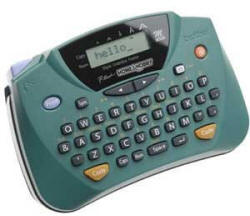
POWER TOOLS
Whether corded or cordless, today's power tools pack more power in smaller, lightweight models. Ergonomic consideration makes today's tools easier and safer to use.
Cordless power tools are enjoying greater acceptance because tool designs and recent improvements in battery and charger technology make them more convenient and versatile, making workers more productive.
The most-used power tools for electricians are saws and drills, including hammer/drills.
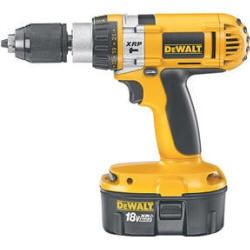
Power drills
Every electrician uses drills, but the type of tool needed varies with the application-what is essential for one worker isn't necessarily needed by another. The power required depends on the material being drilled. For fastening work, a lower-voltage cordless model might be used; for drilling into concrete, a hammer/drill provides more impact and can drill more holes faster.
Multipurpose tools reduce the number of tools needed on a job, top sellers include the DeWalt heavy-duty XRP 18-volt cordless hammer drill/drill/driver kit. The kit comes with two batteries, a charger and carrying case. Popular features include long battery run time, maximum torque from the high-efficiency motor, superior ergonomics, and metal ratcheting chuck with carbide jaws to prevent bits from slipping or falling out.
Saws
As with drills, the type of power saw needed by electricians varies with the job at hand. Because of versatility and dependability, handheld reciprocating saws are one of the most popular classes of power-saw equipment. Spiral saws perform the same tasks as reciprocating saws, but instead of a blade, they cut with a bit with downward, parabolic fluting. Other types of saws used for electrical work include hole saws, cut-off saws and portable band saws.
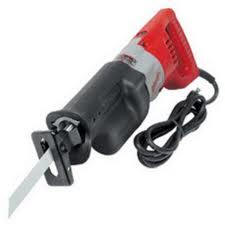
Voltage Detector / Multimeter
One tool I wouldn't do without on an electrical wiring project is a multimeter. With a multimeter you can check for voltage or circuit continuity. For troubleshooting a wiring problem it is a must-have.
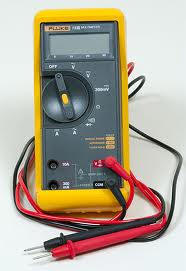
Another tool most electricians like to keep in their tool belt is a non-contact voltage detector. A voltage detector is used for a quick safety check to see if there is voltage or current flow present. Some of these devices are automatic and some must be turned on via a switch. Simply place the end of the tracer beside a wire, breaker or cord to see if it’s energized.
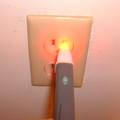
The types of tools that are today's top sellers are the same as they were five years ago, and will probably be the same five years from now, but with marked improvements. That's because electrical contractors have developed proven installation methods, and they need a specific set of tools to perform them.
